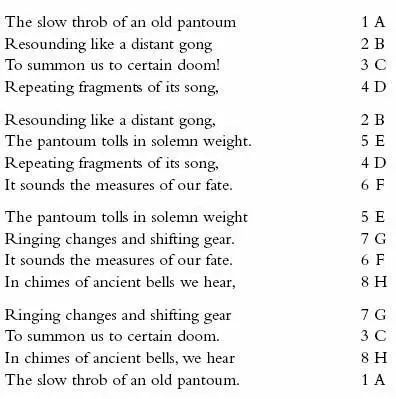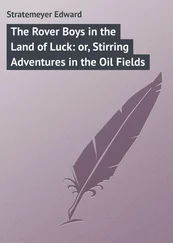Stephen Fry - The Ode Less Travelled - Unlocking The Poet Within
Здесь есть возможность читать онлайн «Stephen Fry - The Ode Less Travelled - Unlocking The Poet Within» весь текст электронной книги совершенно бесплатно (целиком полную версию без сокращений). В некоторых случаях можно слушать аудио, скачать через торрент в формате fb2 и присутствует краткое содержание. Жанр: Старинная литература, на английском языке. Описание произведения, (предисловие) а так же отзывы посетителей доступны на портале библиотеки ЛибКат.
- Название:The Ode Less Travelled: Unlocking The Poet Within
- Автор:
- Жанр:
- Год:неизвестен
- ISBN:нет данных
- Рейтинг книги:3 / 5. Голосов: 1
-
Избранное:Добавить в избранное
- Отзывы:
-
Ваша оценка:
- 60
- 1
- 2
- 3
- 4
- 5
The Ode Less Travelled: Unlocking The Poet Within: краткое содержание, описание и аннотация
Предлагаем к чтению аннотацию, описание, краткое содержание или предисловие (зависит от того, что написал сам автор книги «The Ode Less Travelled: Unlocking The Poet Within»). Если вы не нашли необходимую информацию о книге — напишите в комментариях, мы постараемся отыскать её.
The Ode Less Travelled: Unlocking The Poet Within — читать онлайн бесплатно полную книгу (весь текст) целиком
Ниже представлен текст книги, разбитый по страницам. Система сохранения места последней прочитанной страницы, позволяет с удобством читать онлайн бесплатно книгу «The Ode Less Travelled: Unlocking The Poet Within», без необходимости каждый раз заново искать на чём Вы остановились. Поставьте закладку, и сможете в любой момент перейти на страницу, на которой закончили чтение.
Интервал:
Закладка:
What seems like a silly word game yields poetry of compelling mystery and rhythmic flow. What appear to be the difficulties of the form reveal themselves, as of course they should, as its strengths–the repetition and recycling of elusive patterns that cannot be quite held in the mind all at once. Much in experience and thought deserves a poetic form that can bring such elements to life.
Poetry Exercise 15
Well, all you have to do now is write your own. It will take some time: do not expect it to be easy. If you get frustrated, walk away and come back later. Let ideas form in your mind, vanish, reform, change, adapt. The repetition of end-words in the right hands works in favour of the poem: it is a defining feature of the form, not to be disguised but welcomed. You might harness this as a means of repeating patterns of speech, as we all do in life, or in reflecting on the same things from different angles.
You can do it, believe me you can. And you will be so proud of yourself !
T HE P ANTOUM

How to explain the rules of this strict fifteenth-century form? A PANTOUM (pronounced pan-tomb ) must be composed in full cross-rhymed quatrains: abab, cdcd and so on. It must begin and end with the same line, and this is how the scheme unfolds– draw breath . The second and fourth lines of the first stanza become the first and third lines of the second stanza, the second and fourth lines of the second stanza become the first and third of stanza three and so on until you reach the end. Where the end comes is up to you: unlike the sestina or the sonnet there is no prescribed length to the form, but when you do end you must use the two lines you will not yet have repeated, the first and third of the opening stanza, they are reversed in order and become the second and fourth of the final quatrain. It sounds loopy, but if you look up and see what I have done it really isn’t that hard to follow. I have numbered and lettered the lines to make it clearer.
The effect, as my example suggests, can be quite hypnotic or doom-laden. It can seem like wading in treacle if not adroitly handled. Such a form seems to suit dreamy evocations of time past, the echoes of memory and desire, but it need not be limited to such themes.
How the pantoum arrived in France from the Malayan peninsula in about 1830 I am not entirely sure–its importation is attributed to Victor Hugo. I believe the original form, still alive and well in the Far East, uses an abba rhyme-scheme and insists upon eight syllables a line and thematic changes in each quatrain. I have managed the syllable count but stuck to the more usual cross-rhymes and consistency of subject matter. Since its first European use by Hugo, Baudelaire and other French practitioners it became moderately well-known and popular in England and especially America, the best-known examples being by Anne Waldman, Carolyn Kizer, John Ashbery, Donald Justice and David Trinidad. The playwright Peter Shaffer, who clearly relishes the challenge of old forms (he has experimented with villanelles, and sestinas too) composed an excellent pantoum entitled ‘Juggler, Magician, Fool’.
Here is the opening of Carolyn Kizer’s ‘Parents’ Pantoum’. She eschews rhyme which, given the lexical repetition demanded by the form, seems perfectly permissible. Note that enjambment and some flexibility with the repeated lines is helpful in refreshing the mood of the piece: the line ‘How do they appear in their long dresses’ reappears as ‘In their fragile heels and long black dresses’ for example, and there are additional buts and thoughs that vary the iterations. All this is usual in the modern, Western strain of pantoum.Where did these enormous children come from,More ladylike than we have ever been?Some of ours look older than we feel.How did they appear in their long dresses
More ladylike than we have ever been?
But they moan about their aging more than we do,
In their fragile heels and long black dresses.
They say they admire our youthful spontaneity.They moan about their aging more than we do,A somber group–why don’t they brighten up?Though they say they admire our youthful spontaneityThey beg us to be dignified like them
If you are a nerdy, anagrammy, crossword puzzler sort of a person, as I tragically and irredeemably am, you will be especially drawn to the pantoum. The art, as with other lexically repetitive and patterned schemes, is to choose ‘open-ended’ repeating lines allowing ambiguity and room for manoeuvre. It is one thing, of course, to write them as a fun exercise, quite another to make a poem of readable qualities for others. Technically the ideal is to push the normative requirements of the mode hard, sometimes to breaking point. There in lies the knack–stretching the bubble until just before it bursts. Without hard pressure on the inner walls of its membrane the pantoum–and this holds true of the other complex forms–can seem a flaccid, futile exercise in wordsmanship.
T HE B ALLADEBALLADE is not an easy form to crackNo other rhymes, but only A or B;The paeon, dactyl and the amphibrach,The antispast, molossus and spondeeWill not assist us in the least degreeAs through the wilderness we grimly hackAnd sow our hopeful seeds of poetry.It’s always one step forward, two steps back.But let me be Marvell, not KerouacThe open road holds no allure for me.A garden path shall be my desert track,The song of birds my jukebox melody,The neighbour’s cat my Neil Cassidy.With just a mower for a CadillacI won’t get far, but nor will they. You see–It’s always one step forward, two steps back.A hammock is my beatnik bivouacMy moonshine bourbon is a cup of tea.No purple hearts, no acid trips, no smackMy only buzz the humble honeybee.So let them have their free-verse libertyAnd I shall have my handsome garden shackWe’ll see which one of us is truly free,It’s always one step forward, two steps back. Envoi Prince and peasant, workers, peers or bourgeoisieMcGonagall, Lord Byron, PasternakOf mongrel stock or high born pedigree—It’s always one step forward, two steps back.
The BALLADE, not to be confused with the ballad (or with the musical ballade devised by Chopin), is a venerable French form of some fiendishness for English poets. The difficulty arises, not from any complexity of patterning or repetition such as is to be found in the sestina, but from the number of rhyme sounds needed. It ends with an envoi which, tradition dictates, must be addressed to a Prince . Indeed the very word ‘Prince’ is usually the envoi’s first word: this happy convention, maintained even by modern poets like Dorothy Parker, is a nod to the royal patronage enjoyed by early practitioners such as François Villon and Eustache Deschamps. Those who elected to write sacred ballades would begin their envois with the invocations ‘Prince Jesus!’, or ‘Prince and Saviour!’. Each stanza, the envoi included, ends with the same refrain or rentrement . Early ballades were often composed in three seven-line stanzas, but these days an eight-line stanza with an envoi of four lines seems to have been settled upon by English-language poets. The usual rhyme scheme is ababbabA ababbabA ababbabA babA , in other words ten a rhymes (and a refrain, A, to rhyme with them) and fourteen b rhymes. This is no doubt a doddle in French but the very bastard son of a mongrel bitch in English. G. K. Chesterton’s ‘The Ballade of Suicide’ is one of the better-known examples:The gallows in my garden, people say,Is new and neat and adequately tall;I tie the noose on in a knowing wayAs one that knots his necktie for a ball;But just as all the neighbours–on the wall–Are drawing a long breath to shout ‘Hurray!’The strangest whim has seized me…. After allI think I will not hang myself to-day.To-morrow is the time I get my pay–My uncle’s sword is hanging in the hall–I see a little cloud all pink and grey–Perhaps the rector’s mother will not call–I fancy that I heard from Mr GallThat mushrooms could be cooked another way–I never read the works of Juvenal–I think I will not hang myself to-day.The world will have another washing-day;The decadents decay; the pedants pall;And H. G. Wells has found that children play,And Bernard Shaw discovered that they squall,Rationalists are growing rational–And through thick woods one finds a stream astraySo secret that the very sky seems small–I think I will not hang myself to-day. Envoi Prince, I can hear the trumpet of Germinal,The tumbrels toiling up the terrible way;Even to-day your royal head may fall,I think I will not hang myself to-day.
Читать дальшеИнтервал:
Закладка:
Похожие книги на «The Ode Less Travelled: Unlocking The Poet Within»
Представляем Вашему вниманию похожие книги на «The Ode Less Travelled: Unlocking The Poet Within» списком для выбора. Мы отобрали схожую по названию и смыслу литературу в надежде предоставить читателям больше вариантов отыскать новые, интересные, ещё непрочитанные произведения.
Обсуждение, отзывы о книге «The Ode Less Travelled: Unlocking The Poet Within» и просто собственные мнения читателей. Оставьте ваши комментарии, напишите, что Вы думаете о произведении, его смысле или главных героях. Укажите что конкретно понравилось, а что нет, и почему Вы так считаете.










